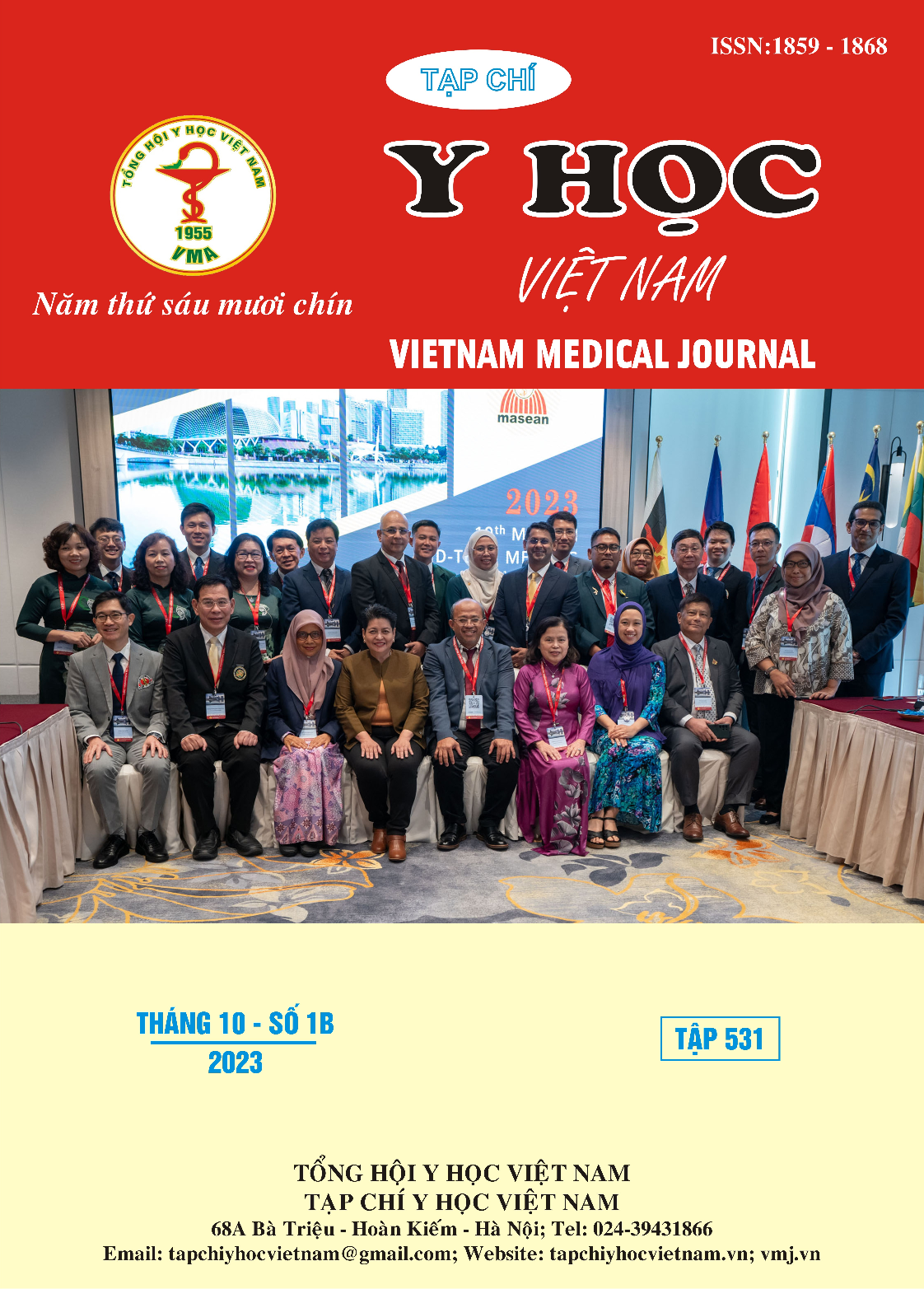COMPUTED TOMOGRAPHY IMAGES OF THALAMIC HEMORRHAGE IN ACUTE-PHASE PATIENTS AT BACH MAI HOSPITAL
Main Article Content
Abstract
Objective: Describe the computed tomography (CT) images of thalamic haemorrhage in acute-phase patients at Bach Mai Hospital from 2022 to 2023. Subjects: We selected 140 patients diagnosed with cerebral haemorrhage based on the World Health Organization's criteria for cerebral infarction (1989) and were enrolled from June 2022 to June 2023 at the Neurology Center of Bach Mai Hospital. Methods: This study employed a descriptive design. Results: The most common location of thalamic haemorrhage was in the posterior region (42.86%), followed by 20% of patients experiencing diffuse bleeding. The distribution of haemorrhage in the anterior, middle, and posterior thalamus was roughly equal, accounting for 12.14%, 10.71%, and 14.20%, respectively. Regarding haemorrhage volume, most cases were <30ml (81.43%), with only 5% of patients having a haemorrhage volume of 60ml or higher. A total of 77.86% of patients exhibited midline shift grade I, while only 3.57% showed grade III. Cerebral ventricle bleeding was absent in 52.14% of patients; single, double, triple, and quadruple ventricle bleeding accounted for 10.71%, 13.57%, 11.43%, and 12.14%, respectively. Regarding the Graeb scale, 71.43% of patients had a ventricle bleeding grade between 0-4, with only 12 out of 140 patients scoring between 9-12. On the Diringer scale, 52.14% of patients had a ventricle dilation score of 0, while 12.14% scored between 7-18, and only 5.71% scored between 19-24. Conclusion: Most thalamic haemorrhage cases were located in the posterior region, and most had a haemorrhage volume <30ml. Most cases of bleeding resulted in midline shift grade I, and the severity of ventricle bleeding was predominantly mild. Over 50% of patients did not exhibit ventricle dilation based on the Diringer scale.
Article Details
Keywords
Thalamic haemorrhage, imaging characteristics of thalamic haemorrhage
References
2. Ravi Garg, Jose Biller. Recent advances in spontaneous intracerebral hemorrhage. PMC pubmed Central, 2019.
3. Taek Min Nam, Ji Hwan Jang, Seung Hwan Kim, Kyu Hong Kim, Young Zoon Kim. Comparative Analysis of the Patients with Spontaneous Thalamic Hemorrhage with Concurrent Intraventricular Hemorrhage and Those without Intraventricular Hemorrhage. J Korean Med Sci 2021; 36(1): e4.re.
4. Kumral E, Kocaer T, Ertübey N.Ö. Thalamic hemorrhage a prospective study of 100 patients. Stroke. 1995; 26 (6), pp. 964-970.
5. Đinh Thị Hải Hà. Đặc điểm lâm sàng, hình ảnh cắt lớp vi tính não và một số yếu tố tiên lượng ở bệnh nhân chảy máu đồi thị có máu vào não thất. Luận án tiến sĩ y học. Viên Nghiên cứu khoa học Y Dược lâm sàng 108. 2017.
6. Stein M, Luecke M, Preuss M. Spontaneous intracerebral hemorrhage with ventricular extension and the grading of obstructive hydrocephalus: the prediction of outcome of a special life-threatening entity. Neurosurgery. 2010; 67 (5), pp. 1243-1252.


